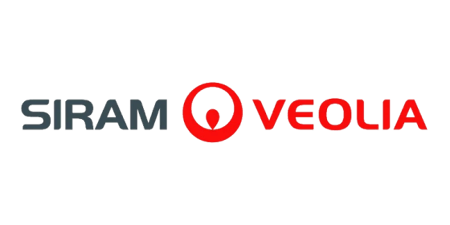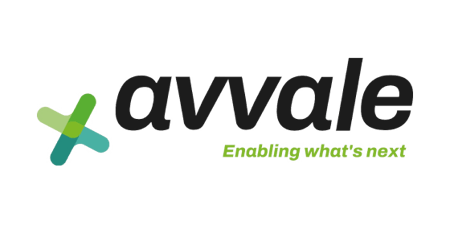
Client:Siram Veolia
Region:Europe
Industry:Energy and Utilities
Siram Veolia automates to boost efficiency, cut waste, and optimize resources

8
automations in development
Client Overview
Siram Veolia ensures efficient management of energy, water, and special waste in Italy. It supports public and private customers in their ecological transformation through sustainable and technologically innovative solutions. Having operated in the country for over 100 years, it has 130 offices with a team of over 3,600 professionals and a turnover of €994 million.
Partner

Siram Veolia is driven by the concept of ecological transformation. This sees it collaborating with customers to ensure they use energy and water efficiently, while cutting waste and optimizing resources.
These themes run deep in the business—and not just when it comes to the environment. In fact, Siram Veolia’s chief information officer and the Italian chief financial officer have identified automation as a means of improving processes and boosting productivity within the company.
“While our IT team is independent from the global organization, we follow its strategy,” says Mario D’Argenio, Head of Corporate Solutions. “There’s a major focus on automation with UiPath.” This is echoed by his colleague, Andrea Soledad Bellucci, Financial Transformation Specialist.
She says, “The Italian CFO is very keen on automation, and I can see why. I work in the finance team analysing processes. Lots are very time consuming and monotonous, with staff spending hours on manual tasks rather than analysing data and adding value.”
Where to start?
D’Argenio and Bellucci could see a huge opportunity ahead of them, but like many organizations, needed help to begin their journey. “At the start, we were a little disorientated. Automation was a new tool. Something we’d not worked with before. We needed a partner to guide us,” D’Argenio says.
The team looked for consultancies that could help implement the software. “We chose Avvale,” D’Argenio continues. “Sometimes you can just feel it when you meet people; that you want to work with them. We felt that about Avvale. They’re big, have lots of experience and help us understand the strategic importance of automation.”
Avvale is a global Digital Business Transformation company on a mission to evolve modern business through the circular economy, enabled by technology.
Avvale supports Siram Veolia in its whole automation journey, advising on the best approaches and providing specialist services. This helps to define the roadmap and business plan so automations can be implemented successfully.
Siram Veolia’s next step was to identify the first automation project. “We wanted to tread carefully,” D’Argenio explains. “So, we decided the first use case would be something simple. We had previously used different software to automate a process. We recreated it using the UiPath Platform.” This allowed D’Argenio and Bellucci to build a new infrastructure and integrate UiPath with the Google suite of tools used throughout the business.
The process in question related to a customer project. “The team would receive requests for work via email. However, it was mandatory to add the messages to a troubleshooting application to meet service level agreements and to avoid fines.”
“In the past, people did this manually, reading the email, opening the software and copying the information from one place to another,” D’Argenio adds. The automation handled it and was just as effective when built with UiPath.
When asked about the impact of this automation, D’Argenio is quick to point out, “The first automation wasn’t about improving efficiency. It was about learning how to use UiPath and building confidence.” Despite this, it’s now managing about 500 emails a month, allowing staff to focus on more important activities.
Introducing more robots
Once complete, the team felt emboldened to begin planning. “We analyzed admin activities across the finance department and organised a study to identify and evaluate new opportunities for automation,” D’Argenio continues.
We focussed on the type of technology being used and spoke to colleagues about time-wasting tasks. We quickly found eight processes.
Andrea Soledad Bellucci • Financial Transformation Specialist at Siram Veolia
The first of these will be overseen by a robot Bellucci affectionately calls RAF. This is an acronym for Risponditore Automatico Fatture, which means Automatic Invoice Responder in English.
With a smile, Bellucci explains RAF’s goal. “He will help the procurement team pay invoices and handle communications. Suppliers often send emails asking about payment dates. If they’re not responded to quickly, more emails come in. RAF will read the emails, collate information about the suppliers, open the enterprise resource planning (ERP) system and respond with an update.”
Bellucci is keen to point out that she’s not rushing in. “In the first phase, we will validate all the responses to ensure RAF is working correctly. When we’re sure he’s getting everything right, we’ll turn it into a full automation.”
D’Argenio chips in, saying, “The automation needs integration between UiPath and our ERP system. Normally, this might require an API.” This is a piece of software that allows two different systems to speak to each other. “These can take a long time to develop. However, we’ve been able to achieve the integration with UiPath connectors.”
The third planned automation will replace a manual billing task. “When we bill a customer, a member of the finance team must add information into the billing system from official sources that show prices. These are on government websites. It’s a lengthy process where someone must visit a webpage, find a document, get the information, copy it and add it to the system. The robot will do it with ease and will also protect revenue, which will have a financial impact on the business.”
Setting goals
While revenue protection is a tangible outcome of this specific automation there are wider aims for all the automations. Firstly, to reduce errors. “In finance, a small error can cost the company dearly,” Bellucci says. The second is to improve employee experience. “We want to make people’s working lives better. More interesting and less routine. This also allows staff to add greater value by focussing on things like data analysis.”
The remaining six automations will eventually handle processes related to staff time sheets, VAT calculations, and qualification of suppliers. The last of these will replace the work of a third party, meaning it will reduce costs for Siram Veolia.
Automation will never replace people
As with other automation projects, there have been worries from staff.
Some colleagues thought the technology might take their jobs. But we emphasise that the automations work for people, rather than replacing them. This is an issue taken seriously by senior management. They’re clear that no one will lose a job to automation.
Andrea Soledad Bellucci • Financial Transformation Specialist at Siram Veolia
D’Argenio interjects a pertinent remark. “People shouldn’t worry about AI or robots taking their jobs. They should be more worried about working for a company that doesn’t embrace automation. Without it, a business can’t be efficient. And if it’s not efficient, it can’t compete. This leads to loss of work, creating a real threat to jobs.”
“We explain this, and we’re also very keen to work with colleagues to identify the manual tasks they don’t like. That way, they’re engaged from the start and can see how automation can help them do their work better. It’s an important bottom-up approach.”
The year of automation
2024 will be the year automation takes off for Siram Veolia. “We have an action plan. While we’re still at the start of our journey, we’ll implement many automations this year,” Bellucci says with pride. D’Argenio agrees, adding, “We have a roadmap and we’re committed to it. We’re also considering automating our software testing with UiPath Test Suite.”
Software testing is a manual task where staff run processes through new or upgraded systems to ensure they work correctly before deployment. It can sap resources and slow down the delivery of new applications.
D’Argenio explains further, saying, “Our ERP system is in the cloud, which means we get regular upgrades every two months. Each time, we need to run regression tests. I want to reduce the load on our IT team through automation.”
Sharing experience
Bellucci believes other organizations considering automation can learn from Siram Veolia’s experience. “When you start out, take small steps and gain confidence,” she says. “Automate single tasks at first and get staff involved so they feel comfortable. Do a pilot to understand benefits, advantages, and challenges,” she continues. “Also, when identifying processes, you’re likely to come across tasks that don’t need robots, but which can be improved. This is a bonus.”
D’Argenio agrees wholeheartedly. “Don’t go for a ‘big bang’ approach,” by which he means trying to automate large, critical processes before you’re ready.
Also, don’t focus on the technology and its functionality. Focus on people, what they do, and why. If you can understand their motivation and goals, you’ll have a better outcome. It’s all about organizational change, not IT.
Mario D’Argenio • Head of Corporate Solutions at Siram Veolia
He finishes by saying, “Find a good partner, like Avvale. Automation has enormous potential, so get experts to unlock it and follow best practices. Learn from their experience and expertise.” Doing so will boost efficiency, cut waste, and optimize resources.
Which perfectly mirrors what Siram Veolia aims to achieve with its clients at an ecological level, illustrating just how deeply the business is committed to making a positive impact on the planet and its own operations alike.





